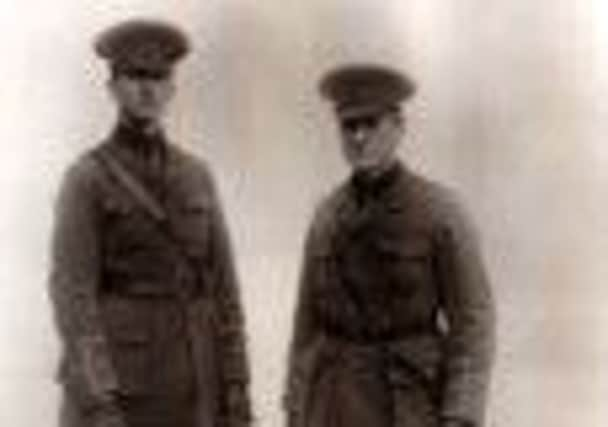Villagers unearth amazing tales from World War I


The exhibitions will be in Rowington and Moreton Morrell. Rowington will be presenting new archives and photographs based on extensive research over the past year into the men of the parish who went out to fight - and the view from the home front.
The new material includes the story of the local publican who went to fight in Palestine in 1917, took part in one of the last, successful, cavalry charges undertaken by the British Army, was torpedoed on his way home but survived to become a stalwart of the local village.
Advertisement
Hide AdAdvertisement
Hide AdAlso included is the story of the German prisoner of war who was billeted in Rowington Windmill and forged a friendship with his captors - and wrote a fascinating letter to them after the war describing life in post-war depression Germany.
And it will explain the story of the Rowington war memorial, gifted to the village by a local benefactor, and unveiled in August 1916, making it one of the earliest first war memorials in the country.
The exhibition will run tomorrow (Saturday, November 1) and Sunday, in Rowington Village Hall from 12pm to 5pm each day. Admission is free and light refreshments are available.
To accompany the exhibition there will be a programme of short talks covering aspects of the war and life in the parish in more detail.
Advertisement
Hide AdAdvertisement
Hide AdThe exhibition is supported by a grant from the Warwick Community Forum.
For more visit www.rowingtonrecords.com
The Dene Valley University of the Third Age (U3a), together with The Church of the Holy Cross, will also be holding an exhibition tomorrow (Saturday) and Sunday at the church in Moreton Morrell.
The exhibition will look particularly at those remembered on the village memorial as well as those who served and survived. The press reported in early 1915 the names of those who had then volunteered out of a village population of 400. By the end of the war some 57 young and not so young men had joined up. Seventeen lost their lives, nearly one third. The exhibition will provide information of what is known as to what happened to each serviceman.
Of particular relevance to remembering Moreton Morrell in the Great War is the contribution made by the two related wealthy American families the Garlands and the Emmets who lived in the village at the time of the Great War.
Advertisement
Hide AdAdvertisement
Hide AdBoth Charles Tuller Garland, who built Moreton Hall now the agricultural college, and Robert Emmet not only took out British citizenship in 1914 but joined the British army. Robert Emmet together with his wife Louise built the now demolished mock Elizabethan mansion at Moreton Paddox. Louise and Robert turned their home into a convalescent hospital for wounded soldiers from the war. Robert and Louise’s sons also served. The eldest Robert was only 16 at the outbreak of the war but special permission was given by the war office for him to join the cavalry.
Unfortunately he was to die of typhoid aged 18.
Robert Emmet senior served in Egypt with the Warwickshire Yeomanry and then on the Western Front with the Royal Artillery from 1916 to 1919. He was a major and was mentioned in dispatches and awarded the DSO.
Entry is free and on Saturday the exhibition will be open 10am to 5pm. Refreshments will be served. On Sunday the exhibition will continue from after the church service until noon.